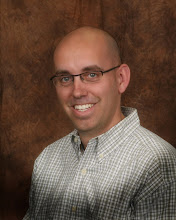A Perfect Program for Seniors Who Want to Stay in Their Homes
You've heard the stories; elderly seniors who cannot afford to pay the expense for the upkeep of their home, a home they may have owned for decades. With a fixed income and increasing demand placed on expenses, the homeowner has few options. Real estate taxes alone force many seniors to make the difficult decision to sell their home and live with family or move to assisted living quarters.
Most elders, 81 percent of those age 62 and older, own their home. Seventy-four percent own them free and clear from any mortgages. The logical answer to reduce the stress of the monthly expense is for the senior homeowner to tap the dormant equity in their home. Equity that has increased dramatically in the decades they lived in the home. Equity that can now be converted to supplement monthly income or use as a line of credit for any purpose.
The program is called the Home Equity Conversion Mortgage or HECM, also known as the Reverser Mortgage. This plan has been around for quite a few years, however the lack of marketing and the limited demand started the program on a slow path. In fact, there were 157 reverse loans originated in 1990, while lenders in 2003 originated 18,097 new loans.
In addition to the lack of demand and understanding, the cost prevented many people from developing an interest in the program. The fees and costs are now predetermined and approved by HUD, the cabinet position of the government responsible for monitoring issues dealing with consumer protection and fairness in housing. Each loan has a 2 percent fee paid to the lender and a 2 percent fee paid to HUD in the form of mortgage insurance protection. Other closing costs such as title expenses, appraisal and deed recording fees are also necessary. All costs are deducted from the existing equity in the home, therefore, requiring no out of pocket monies from the Homeowner.
The Reverse Mortgage requires no processing of the homeowner, it's an automatic approval. The age of the owner and the value of the home determine the amount of money available to the homeowner.
The minimum age to qualify for the plan is 62. If two borrowers are applying for the loan, the younger of the two is used to calculate the maximum money available. For example, if the younger homeowner is 76 years of age and the home's value is $225,000, the payout to the homeowner will be in the range of $150,000. Again, that $150,000 may be tapped as a line of credit or added supplemental income. This income is received income tax free and will have no ill affect on other earnings the homeowner may be receiving. There are no restrictions on the line of credit proceeds. Homeowner can pay existing liens on the property, make improvements , gift money to children or grandchildren, take trips or just enjoy the peace of mind financial security provides.
For the Seniors who decide the monthly income would be more practical, those checks would be paid until the passing of the last remaining recipient. The example of a $150,000 payout may translate into supplemental income of $950 per month. More than enough to pay the added tax assessments and other unforeseen expenses that otherwise would have driven the homeowner to consider selling their home.
There are numerous purposes and examples of how the reverse mortgage serves the needs of those homeowners who wish to remain homeowners. An expression we hear often is the Reverse Mortgage offers a "quality of life" for people who deserve the opportunity to enjoy their golden years.
Get your FREE $30 gift card by taking advantage of FREE Reverse Mortgage Education over the phone. www.30dollargascard.com (866) 800-0280
Reverse Mortgage Man
www.moneywise.net
Subscribe to:
Post Comments (Atom)





No comments:
Post a Comment